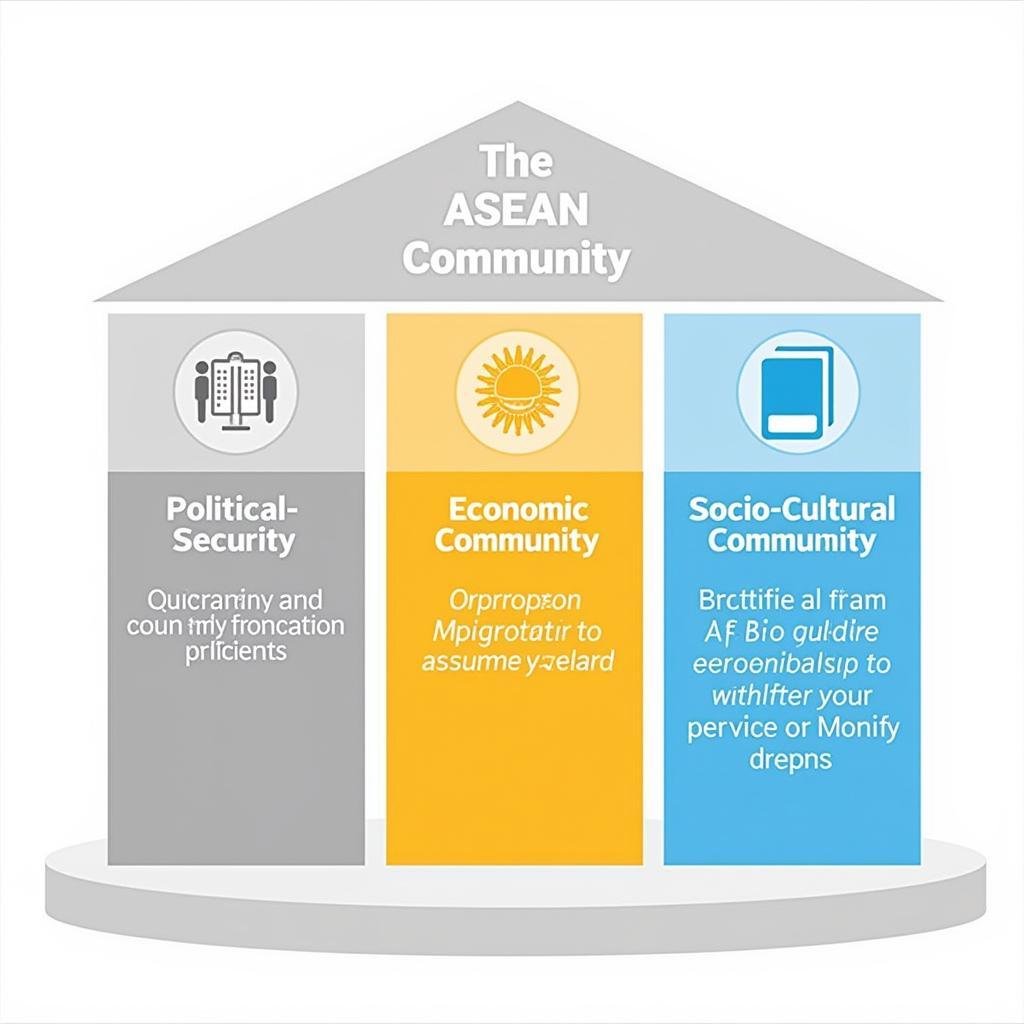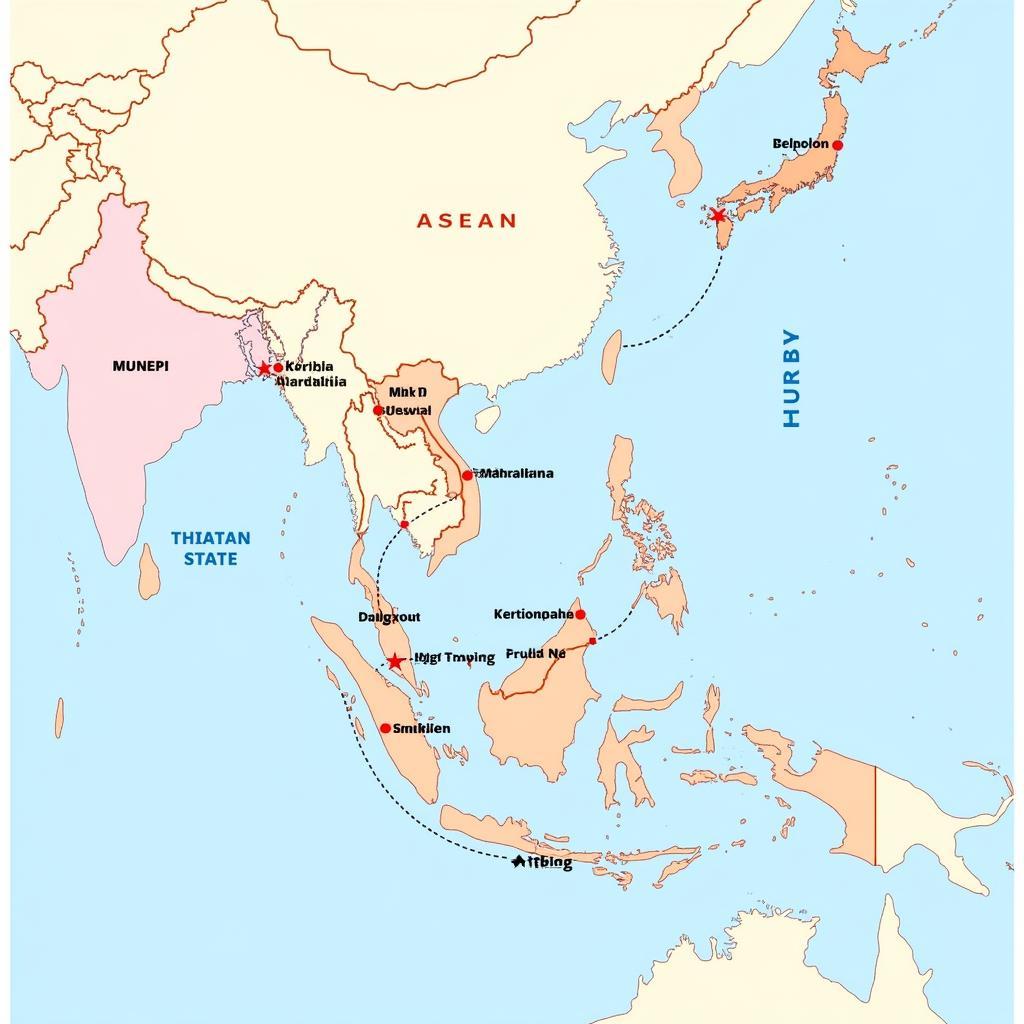The Asean Agenda is a dynamic and multifaceted framework guiding the region’s collective efforts toward integration and development. From economic cooperation to socio-cultural exchange, the agenda sets the tone for how ASEAN nations navigate shared challenges and seize opportunities in the global landscape. Let’s delve deeper into the intricacies of this crucial roadmap.
Deconstructing the ASEAN Agenda: A Comprehensive Overview
The ASEAN agenda represents the collective vision and strategic priorities of the Association of Southeast Asian Nations. It encompasses a wide range of issues, from promoting economic growth and regional stability to fostering social development and enhancing cooperation in various sectors. The agenda is not static but constantly evolves to address emerging challenges and reflect the changing global context. It acts as a unifying force, aligning member states towards common goals and strengthening regional integration. For further information on the ASEAN Agenda 2030, explore asean agenda 2030.
The Pillars of the ASEAN Agenda
The ASEAN agenda is built on three interconnected pillars: the Political-Security Community, the Economic Community, and the Socio-Cultural Community. These pillars represent the key areas of focus for ASEAN cooperation and are designed to reinforce one another in pursuit of a cohesive and prosperous region.
- Political-Security Community: This pillar aims to promote peace, stability, and security in the region through dialogue, cooperation, and conflict resolution mechanisms. It also emphasizes the importance of good governance, human rights, and the rule of law.
- Economic Community: This pillar seeks to establish a single market and production base, characterized by free flow of goods, services, investment, skilled labor, and freer flow of capital. It aims to enhance ASEAN’s competitiveness and attract foreign investment.
- Socio-Cultural Community: This pillar focuses on fostering a sense of shared identity and promoting cultural exchange, education, and social development. It addresses issues such as poverty reduction, environmental protection, and disaster management.
 ASEAN Economic Community Pillars
ASEAN Economic Community Pillars
Key Priorities and Initiatives within the ASEAN Agenda
The ASEAN agenda encompasses numerous initiatives and programs designed to achieve its overarching goals. These initiatives span various sectors and involve collaboration among member states, as well as with external partners. Some of the key priorities within the current ASEAN agenda include:
- Promoting sustainable and inclusive economic growth: This involves initiatives to enhance regional connectivity, facilitate trade and investment, and develop human capital. Learn more about the ASE agenda at ase agenda.
- Strengthening regional security cooperation: This includes efforts to combat transnational crime, address terrorism, and promote maritime security.
- Enhancing socio-cultural cooperation: This encompasses initiatives to promote education, cultural exchange, and people-to-people connectivity.
What is the 2020 ASEAN Agenda?
The 2020 ASEAN agenda, while now superseded, focused on building a people-oriented, people-centred ASEAN Community. Find more information on the agenda 2020 asean. This underscores the importance of engaging citizens in the integration process and ensuring that the benefits of regional cooperation are shared by all.
 ASEAN Connectivity Initiatives
ASEAN Connectivity Initiatives
Dr. Maria Santos, a leading expert on ASEAN affairs, notes, “The ASEAN agenda is not merely a document; it’s a living testament to the region’s commitment to collective progress. It requires continuous adaptation and collaboration to effectively address evolving challenges.”
The ASEAN Agenda in the Global Context
The ASEAN agenda is not formulated in isolation. It takes into account the global landscape and seeks to position ASEAN as a key player in international affairs. The agenda recognizes the importance of engaging with external partners and participating in multilateral forums. The ASEA Convention 2019 Agenda provided a platform for such discussions, you can find details at asea convention 2019 agenda.
Challenges and Opportunities
The ASEAN agenda faces various challenges, including differing levels of development among member states, political and economic instability in some countries, and the rise of geopolitical tensions. However, it also presents significant opportunities for the region to leverage its collective strength, promote economic growth, and enhance its global standing.
 ASEAN Global Partnerships
ASEAN Global Partnerships
Professor Lee Wei Ming, an economist specializing in Southeast Asian economies, states, “The ASEAN agenda provides a framework for navigating the complexities of the global economy. By working together, ASEAN nations can enhance their competitiveness and attract greater foreign investment.”
Conclusion
The ASEAN agenda provides a roadmap for the region’s journey towards integration and development. By focusing on cooperation, collaboration, and shared prosperity, ASEAN aims to build a resilient and dynamic community that can thrive in the 21st century. The ASEAN agenda is a constantly evolving framework that requires ongoing engagement and adaptation to ensure it remains relevant and effective in addressing the challenges and opportunities facing the region.
FAQ
- What is the main purpose of the ASEAN agenda?
- What are the three pillars of the ASEAN Community?
- How does the ASEAN agenda address economic cooperation?
- What are some of the challenges facing the ASEAN agenda?
- How does the ASEAN agenda promote regional security?
- What is the role of the Socio-Cultural Community?
- How does the ASEAN agenda engage with external partners?
Need assistance? Contact us 24/7: Phone: 0369020373, Email: aseanmediadirectory@gmail.com or visit us at Thôn Ngọc Liễn, Hiệp Hòa, Bắc Giang, Việt Nam.
